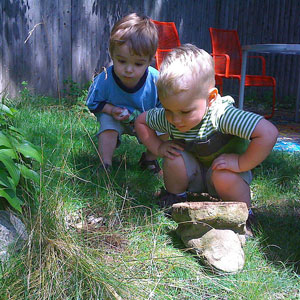Using Insect Repellents on Children
By Chris Williams on June 25, 2013.
 Mosquitoes and ticks become even more worrisome as we discover new diseases that they spread to people. It’s up to us as parents and adults to make sure that children are protected from mosquito and tick bites as they play outside. The best way to protect children from these blood suckers is with personal repellent sprays or lotions.
Mosquitoes and ticks become even more worrisome as we discover new diseases that they spread to people. It’s up to us as parents and adults to make sure that children are protected from mosquito and tick bites as they play outside. The best way to protect children from these blood suckers is with personal repellent sprays or lotions.
Is DEET the Best Choice?
Insect repellents containing DEET remain the most popular and possibly the most effective against mosquitoes. The amount of DEET in insect repellents ranges from 10% to more than 50%, although the higher percentages of DEET (over 30%) apparently don’t offer any additional protection. DEET repellents used on children should contain no more than 30% DEET.
Other repellent ingredients recommended by the Centers for Disease Control (CDC) and EPA are: picaridin, oil of lemon eucalyptus (OLE or PMD), IR3535, and permethrin (on clothing only). OLE products should not be used on children under 3 years of age. Products containing ingredients other than these may offer little protection, and any product with less than 10% of the active ingredient may offer protection that lasts only 1-2 hours.
Don’t apply repellents to children under 2 months of age. To protect infants, use an infant carrier draped with mosquito netting. Cover playpens and other small spaces with mosquito netting instead of using repellents on small children. Limit the use of repellents on children by dressing them in long sleeves and long pants whenever possible, and especially when going into mosquito or tick areas.
How to Apply Repellents to Children
- Don’t allow children to handle insect repellents or apply them. Apply the repellent to your own hands and then put it on the child. Apply repellent 15-20 minutes before the child goes outdoors.
- Apply sunscreen to the child first, then apply insect repellent. Avoid combination products containing both sunscreen and repellent since the repellent makes the sunscreen less effective, requiring reapplication. Re-applying a combination product can overexpose a child to repellent.
- Apply a thin film of repellent, just enough to cover exposed skin. Applying more doesn’t make the repellent more effective. Reapply more later if the child is getting bitten.
- Don’t spray repellent directly onto a child’s face. Put it on your hands first then apply it to their face, avoiding the eyes and mouth. Don’t put repellent on children’s hands–which might go into their mouths or eyes. Don’t put repellent on any skin cuts or scrapes, or on irritated skin.
- Don’t apply insect repellent under clothing. Clothing, hats, and shoes can be treated directly with a repellent product containing permethrin. The repellent effect lasts through several washings. Never use permethrin on skin; it’s for clothing ONLY. Permethrin is especially effective against ticks.
- After you get back inside, wash the repellent off of the child’s skin with soap and water. Any clothes exposed to skin repellent (not permethrin) should be washed.
Photo credit: juhansonin / Foter.com / CC BY